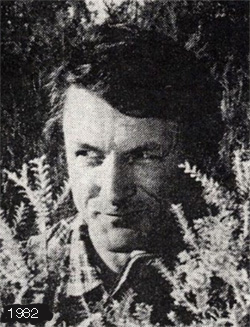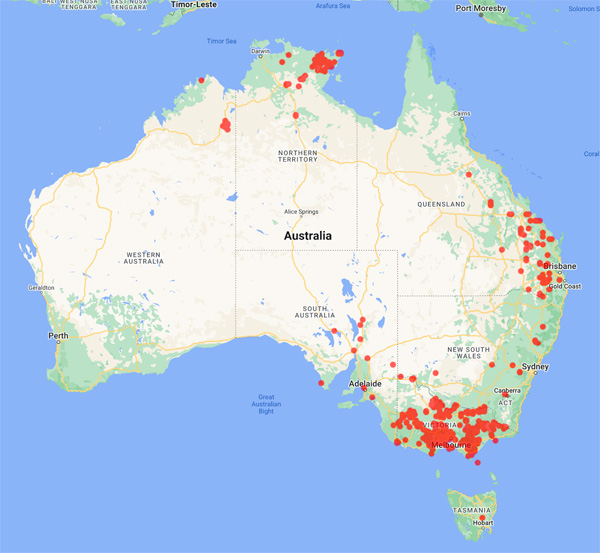
Council of Heads of Australasian Herbaria
Australian National Herbarium
Biographical Notes
 |
Council of Heads of Australasian Herbaria |
 Scarlett, Neville Harry (1944 - 2022)
Scarlett, Neville Harry (1944 - 2022)Born 5th October 1944; died 10th August 2022.
Neville Scarlett was a botanist/ecologist
who spent much of his life working on the
classification, ecology and conservation of
the Australian flora, the last 50 years of it at
La Trobe University, and the last few years as
an honorary research person there.
Neville was brought up in Geelong and
then graduated with a BSc from the Botany
School, University of Melbourne. He then
studied the plant ecology of the Brisbane
Ranges for his PhD with Dr David Ashton
before withdrawing over the scope of the
project.
From then onwards, he was usually employed
on grants as a Research Officer for the La Trobe
botanist Dr Bob Parsons. For a number of
years in the 1970s and 80s, the work involved
attempting to locate all surviving populations
of every native plant species in Victoria
thought to be threatened with extinction
Australia-wide.
It quickly became clear that
Neville had an extraordinary gift for finding
and reading old documents, examining old
herbarium specimens and then searching for
and re-discovering threatened plants in the
field. His rate of output of stunning discoveries
was amazing - e.g. Ballantinia antipoda (not
seen since the late 19th century), Taraxacum
cygnorum (not seen since 1907) - the list
goes on and on. This 'rediscovery project'
remains the greatest single contribution to
Victorian plant conservation that there has
been. This led to an ambitious project to re
establish populations of some of the rarest
species into secure conservation reserves.
Neville pioneered propagation and planting
techniques, creating some of the earliest
threatened species recovery plantings in
Australia.
Since then, a lot of Neville's work has been on
the taxonomically very difficult plant genera
Lepidium (peppercresses) and Taraxacum
(dandelions), correcting past errors and
providing workable keys to their constituent
species.
His Taraxacum revisions are available
in the floras of Australia, Victoria and South
Australia and his Lepidium revision in the
latter.
Many of his excellent plant collections
are housed at the National Herbarium of
Victoria.
Source: Extracted from: Parsons, R.F. in https://asbs.org.au/newsletter/pdf/22-sep-192.pdf
Portrait Photo: The Wimmera Mail Times, August 27, 1982
Data from 2,127 specimens
